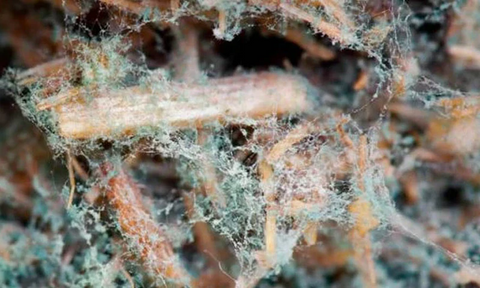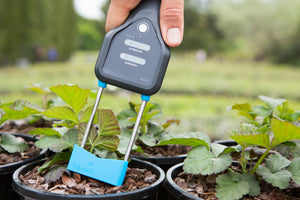Types of Beneficial Microbes
The idea of working with microbes can be a bit intimidating or confusing for those that have never done it before. Introducing strains and colonies to your soil culture has several benefits that can increase your plant yield, overall health, and vigor.
Beneficial microbes often work within the rhizosphere (the area that surrounds your plant’s root system) of your soil. This is where these beneficial buddies hang out, eat, digest, and positively influence what grows above the soil.
They form mutually beneficial relationships with your plants. These bacteria and fungi help to digest potential pathogens and then convert them into food or beneficial nutrients for your plants. They have a little more going on for each other than just the mutual backscratching.
Rhizobacteria - Don’t Wash It Off
Bacteria have gotten a bad rap as the reason that we get sick or a reason that plants die off. However, rhizobacteria are the good kind of bacteria that you should pay money for to add to your grow if they are not already flourishing naturally. These beneficial bacteria inhabit the rhizosphere of your plants, working to help increase nutrient uptake and fight against potentially harmful pathogens. The most common strains of beneficial bacteria you will find in commercial products are Bacillus, Streptomyces, and Pseudomonas.
Azospirillum

Azospirillum is another type of rhizobacteria that you will often see sold as a standalone additive. It is some pretty powerful stuff and worth learning all about.
Azospirillum, along with the other rhizobacteria, are nitrogen fixers. This means that they convert the unusable nitrogen into a form that your plants can use. They take in the atmospheric nitrogen, digest it and excrete it so that your plants grow bigger and stronger!
Fungi Benefits
Although mushrooms are great for you, this fungi is not the type you put on your pizza. Mycorrhizae, Trichoderma, and Glomus are all beneficial fungi strains.
Trichoderma

Trichoderma are key in helping your plant reach its full potential. They protect the root zones from parasites. After melting the cell wall of the ill-intended pathogens, Trichoderma digests pathogens converting them into nutrients for your crop. Additionally, Trichoderma act as immune support for your plants as it surrounds and protects the roots against disease.
Mycorrhizae

Mycorrhizae is a wild fungus. They extend the root system of your plants. By extending the root system, Mycorrhizae thereby increase the surface area covered in the soil, expanding your crop’s nutrient supply. It does this by forming a thin covering around the root that continues to replicate, elongating the root.
This is a mutually beneficial relationship. The fungi feed on carbohydrates (photosynthesis by-product) that the roots give up in exchange for the extended ‘root system’ and added nutrients mined by the Mycorrhizae.
Just like Trichoderma, Mycorrhizae help build the immune systems of your plants. These two work well together and can be found in one of our favorite products, Recharge.
Trichoderma is more resilient when used with synthetic nutrients and will continue to feed even with the use of synthetic, salt-based nutrients. Salt-based nutrients conflict with Mycorrhizae, sending signals that the plant is getting all the nutrients that it needs, rendering Mycorrhizae useless.
Glomus
Glomus is also a beneficial fungus and a genus of Mycorrhizae. It thrives in the rhizosphere’s environment. Its main reason for praise is due to its ability to convert soil-bound nutrients into plant-available nutrients. This is very useful when working with mineral-rich soils and growing media because Glomus can use it as food.
Beneficial Microbes - When to Use What?
Propagating with Azospirillum

Some beneficial microbes work better in certain situations than others. For instance, when you are propagating it is beneficial to soak your seeds or roots in Azospirillum. This will kick-start the growing process.
Use Azos to soak your growing media in a light solution (4 tablespoons to a gallon of water) before placing your clones in them. Don’t forget the tips! Soak your root tips in a more concentrated solution (one-part Azos to two parts water) for about 15 minutes and then plant them in your media.
From Transplant to Veg
Clones are very sensitive to environmental stress. Plants in the cloning stage of life are at high risk for a potential pathogen invasion. During this point in their life-cycle, we are fond of adding Recharge to the mix. Recharge contains four different strains of the bacteria, Bacillus, as well as our favorite fungi—Mycorrhizae and Trichoderma.
Using Recharge on your transplants and through the vegetative stage is the proactive and recommended approach. Remember the adage: an ounce of prevention is worth a pound of cure. A healthy plant will much more easily fight off invaders and maintain vigorous growth than a weak one. By allowing your plants to build up their defenses and protect themselves against possibly harmful intruders—such as mold and parasites, your crop will be able to maintain stronger growth and better yields.
For best results brew Recharge and Mykos together to create a powerhouse immune booster for your plants. You should notice white, healthy roots and a girthy stalk that you wouldn’t have without Scotty Real’s special sauce.
As an alternative to a Mykos and Recharge blend, if you are looking to only use one product, we would go with Oregonism or Bigfoot mycorrhizae. See the comparison of the products below:
Oregonism

- 16 species of Mycorrhizal fungi
- 14 species of beneficial bacteria
- 2 species of Trichoderma
Mammoth P

- Mammoth P puts a strong focus on the phosphorus cycling processes to ensure the release of soil P and micronutrients – improving the phosphorus availability for your plants.
- This bacteria blend acts as micro-bioreactors, constantly producing a more diverse suite of enzymes that enhance phosphorus availability than the leading enzyme-specific products.
RECHARGE

- 4 species of Glomus (Mycorrhizae)
- 4 species of Bacillus
- 2 species of Trichoderma
- Plus kelp, molasses, humic acid, fulvic acid, and amino acids
Bigger numbers don’t necessarily mean better. Mammoth P is double the cost of Oregonism. All three products have been shown to improve yields, increase nutrient uptake, and build up a tolerance within the plant’s defensive systems. You can use any of these products along with your synthetic nutrients, but make sure to time the addition correctly so you get the most out of your Mycorrhizae.
Not a One-Hit Wonder
You can’t expect to hit it and quit it with microbes. They are living organisms that eventually die off. The bacteria and fungi will self-replicate but they will get weaker every time that they go through the cycle.
It is best practice to inoculate your plants weekly by giving them a healthy brew of their favorite blend of beneficial microbes. It helps to keep the population of do-gooders at a level that will make sure to give your plants all that it requires. The microbes are non-toxic and you cannot oversupply your plants, although you can over-water them if applying too much microbe brew too often.
When in Bloom
It is always an exciting time when your plants transition from veg to flower. Everything seems to come alive and all of your hard work is finally paying off. It is during this time that you will want to take a step back from introducing bacteria and fungi to the rhizosphere.
During flower, your plants don’t require nitrogen at the level that these bacteria will provide. If you continue to use beneficial bacteria, we recommend only using Recharge, Oregonism, or Mammoth P. Although the fungi and bacteria are non-toxic, it is during this stage that your plants will not benefit from it as much as they had in the veg state.
For novice growers, we recommend that you stay away from using beneficial bacteria altogether when entering the flowering stage. If you are feeling the need to continue using beneficial bacteria, consider purchasing a solely Mycorrhizae additive. Big Foot Mycorrhizae is a liquid Mycorrhizal additive that you can make a very light solution (1-5 mL/gal) to apply to your plants during flower. Mycorrhizae will not harm your plants and will simply die off if is not needed.
The More You Know, the Better You Grow
Know that you have a complete guide to using microbes to enhance your grow, there is no reason to not begin inoculating immediately! Creating this community of bacteria and fungi has so many benefits that you just can’t pass it up.
A few things to remember:
- When making your brew teas, make sure that you are using water with a pH of 6.0 or are mixing it with distilled water
- Store your microbes in a room temperature environment to ensure they do not die off due to extreme temperature changes
- Reinoculate weekly for the best results
- Soak your roots in a denser solution than your growing media
- Always follow the supplier’s user recommendations when first starting to use them
- They are non-toxic
- A natural way to boost your plant’s immunity, growth, and nutrient uptake
For more information about beneficial microbes and other useful growing information, visit our blog page or come visit us at one of our seven locations!
